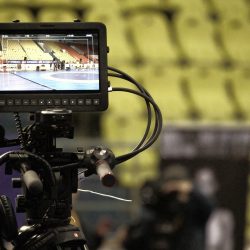Why cell phones should never be used while driving?
Cell phone use while driving has become a leading cause of vehicle crashes over the last two decades. Using a cell phone while driving increases the driver’s risk of causing a crash. Drivers are distracted, decreasing the driver’s awareness on the road, leading to more car crashes.
Is it illegal to use your phone while driving in the US?
Hand-held cellphone use ban: 25 states, D.C., Puerto Rico, Guam and the U.S. Virgin Islands prohibit all drivers from using hand-held cellphones while driving. Text messaging ban: 48 states, D.C., Puerto Rico, Guam and the U.S. Virgin Islands ban text messaging for all drivers.
What states is it illegal to talk on your phone while driving?
However, California, Connecticut, Delaware, Georgia, Hawaii, Illinois, Maine, Maryland, Massachusetts, Minnesota, Nevada, New Hampshire, New Jersey, New Mexico, New York, Oregon, Rhode Island, Tennessee, Vermont, Virginia (effective Janu), Washington, West Virginia (plus Washington, D.C., Puerto Rico, Guam …
How do I make my phone hands free?
How to: To talk on the phone, you’ve got two options:Speakerphone mode. This can be either OK or awful depending on how loud your car is. Your call. Get an earpiece/headset and microphone. This can be one that plugs into your phone or connects wirelessly via Bluetooth from your phone to the earpiece/mic.
How do police detect mobile phone use?
Cameras targeting illegal phone use across NSW The cameras use artificial intelligence to automatically review images, detect offending drivers, and exclude images of non-offending drivers from further action.
Can a front seat passenger use a mobile phone?
ACT. In the ACT, passengers are legally permitted to use their phones while another person is driving. However, there are penalties for drivers driving “with a distracting TV or video display unit” that could include a passenger’s phone. This infringement attracts a fine of $245.
Can a passenger use a cell phone?
Activities that are not restricted under the law include using a cellphone in a hands-free mode, using one earphone, drinking beverages, eating, smoking, talking with passengers, calling an emergency service, and using hand-held radios in commercial vehicles.
What do phone detection cameras look like?
While the speed cameras on NSW roads have been typified by their white boxy look, the new mobile phone detection cameras look more modern and sleek. They have a rectangular black box with cameras either side of it. Transport for NSW has supplied Lifehacker Australia with two examples of what the cameras look like.
Can you speed to overtake?
Yes, it’s illegal to speed while passing another car. In fact, it’s illegal to drive in excess of the speed limit at any time, no matter the circumstances. But while it might feel safer to try and complete an overtaking move quickly, you must always obey the speed limits or risk a significant fine.
Where is it illegal to overtake?
It is illegal to overtake if there are road signs or markings prohibiting it. The latter is a solid white line coupled with a double white line on your side of the road. (The only exception would be is if you were straddling the double white lines on order to pass a cyclist on your side of the road.)
Are you allowed to overtake on the left?
Unless you’re a bicycle rider, the only time you can overtake a vehicle on the left is when it is safe to do so and when the vehicle is: waiting to turn right or make a U-turn. stationary. travelling in a marked lane.
How do you overtake on the highway?
When driving a vehicle being overtaken by another vehicle, you must:keep to the left, if safe, to allow a reasonable space for the overtaking vehicle to pass or.keep within your lane and.not increase your speed until the other vehicle has completely overtaken your vehicle and returned to the lane or line of traffic.
How do you overtake properly?
Accelerate and overtake as quickly as possible. You may have to change to a lower gear to give your vehicle more power and acceleration. After passing the vehicle, conclude the overtake with a signal that indicates your intention to get back into lane.






